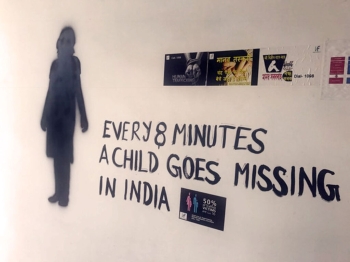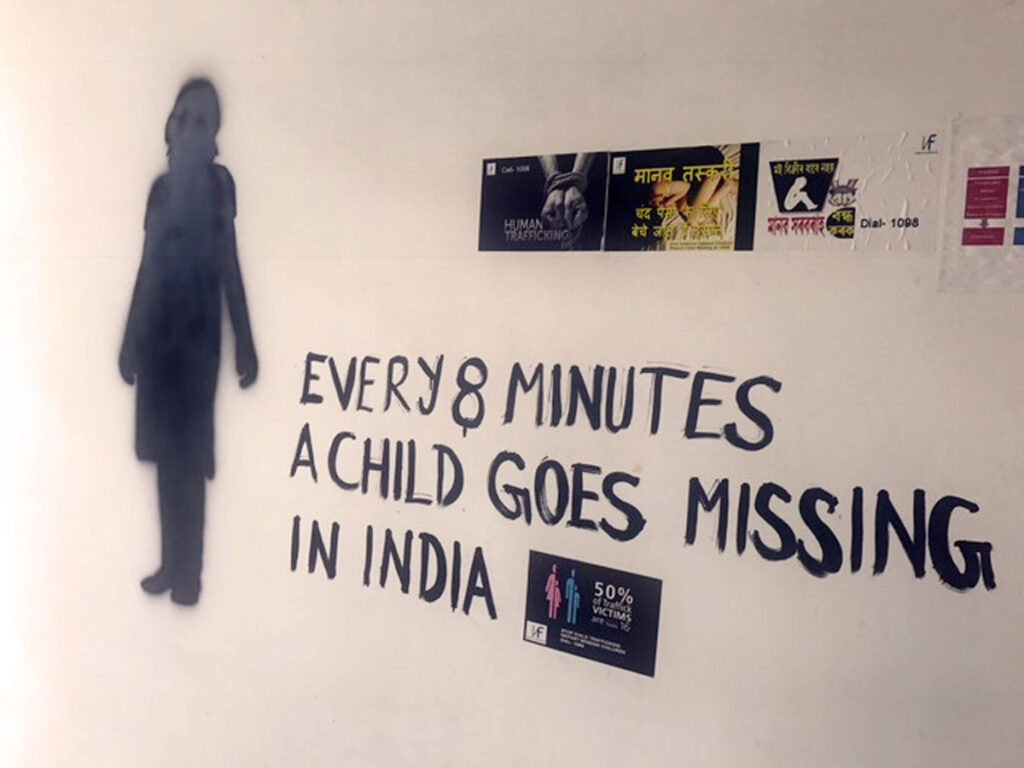
.png) M L Satyan
M L Satyan

Last week an NGO Director in Tamil Nadu sent me a news clipping. It said that in just one-day three girls were missing in Ramanathapuram district in the State. The report mentions about the network of human traffickers, including bus drivers and conductors. They identify vulnerable girl students, make them fall in love with them and sell them to the redlight area in Mumbai.
After receiving this news report, I watched a Tamil movie named Agilan. Agilan is a crane operator, who is also a smuggler at a harbour in Chennai. He works for Paranthaman, who runs a small-time smuggling business. Being ambitious by nature, Agilan strikes a deal with an entrepreneur named Kapoor and is assigned to deport a man who holds confidential secrets of various countries. The film also shows how human trafficking takes place through ships.
On 18th April, 2023 I met a few NGO friends at Tuticorin in Tamil Nadu. All of them confirmed that human trafficking, especially of young women and girls from rural areas, is happening silently. In most cases, the traffickers seem to be family members and relatives of the victims.
During my visit to Jharkhand last month, I learnt that many tribal girls migrate to Delhi, Mumbai, and Bengaluru for jobs mostly through brokers or job-placement agencies. Two years ago, I met a group of tribal girls at Good Shepherd Convent, Mumbai. All of them do domestic work. Many of them were promised better jobs in shopping malls and medical companies, but were offered only domestic work. They have their own painful stories.
What I am surprised is that a vast majority of the common people is unaware of this national and international crime. Today human trafficking has become a multi-billion-dollar business all over the world. Here are some glimpses of recent human trafficking in India:
• Drug peddlers operating in Ahmedabad have been increasingly using orphan children as drug courier, according to senior police officials (Times of India, April 13, 2023).
• A 17-year-old girl was tortured by her employers in Gurugram. Her elder sister too was brought from her village for domestic work. They have been untraceable for the last several months. The police arrested a Delhi-based placement agency owners. (NDTV, February 12, 2023).
• A study report prepared by some IPS Officers has warned the vulnerabilities of the high-speed 5G telecom network that can provide an excellent platform for middlemen and agents for creating linkages for crimes such as drug trafficking, human and organ trafficking, money laundering and terror financing. (NDTV, January 24, 2023).
• Six minor girls from Assam have been rescued from the clutches of human traffickers in various parts of the country. As per the police the girls were rescued after receiving complaints at many police stations in Karbi Anglong district. (NDTV, January, 22, 2022).
Let us understand human trafficking. It is the recruitment, transportation, transfer, harbouring or receipt of people through force, fraud or deception, with the aim of exploiting them for profit. Men, women and children of all ages and from all backgrounds can become victims of trafficking. The traffickers often use violence or fraudulent employment agencies and fake promises of education and job opportunities to trick and coerce their victims.
This is the third largest organized crime after drugs and the arms trade across the globe. The 2022 Global Report on Trafficking in Persons examines court cases showing that female victims are subject to physical or extreme violence at hands of traffickers at a rate three times higher than males, and children are subjected almost twice as often as adults.
The report also details how war and conflict offer opportunities for traffickers to exploit. It shows that the war in Ukraine is elevating trafficking risks for the displaced population. Most victims originating from conflict zones are trafficked to countries in Africa and the Middle East. Countries in these regions convict fewer traffickers and detect fewer victims than the rest of the world.
Today, 90% of human trafficking in India happens domestically, not across borders. In many cases, traffickers lure children or young adults from rural villages to the city with the promise of well-paid work. Then, victims are transferred to people who, in a real sense, become their slave masters. Some victims work without pay as household maids. Others enter forced marriages with strangers they have never met. Some are forced into bonded labour in the mining or agricultural sectors. Others are sold into brothels.
The United Nations Office on Drugs and Crime (UNODC) reports that sexual exploitation constitutes about half of human trafficking in the South Asia, East Asia and the Pacific Region. Estimates put the number of women in prostitution in India between 2 and 3 million, many of whom are children. These sex-trafficked minors live in squalid conditions in the redlight districts of major cities, servicing multiple clients a day.
The root causes of trafficking are poverty, social or cultural practice and migration. Other causes are the porous nature of borders, corrupt government officials, the involvement of international organised criminal groups or networks and limited capacity of or commitment by immigration and law enforcement officers to control borders. People from economically disadvantaged classes, and belonging to the categories of SC, ST, OBC are more susceptible to fall victim to such malpractices.
Here are the Constitutional and Legislative Provisions regarding human trafficking:
• Article 23(1) prohibits the trafficking of persons.
• Immoral Traffic (Prevention) Act, 1956 (ITPA) aims to stop immoral trafficking and prostitution in India and is divided into 25 sections and one schedule.
• Sections 366(A) of Indian Penal Code prohibits kidnapping and Section 372 of IPC prohibits selling minors into prostitution.
• Bonded Labour System (Abolition) Act 1976, Child Labour (Prohibition and Abolition) Act 1986 and Juvenile Justice Act prohibit bonded and forced labour.
• Protection of Children from Sexual offences (POCSO) Act, 2012 is a special law to protect children from sexual abuse and exploitation.
National Crime Record Bureau (NCRB) was set up in 1986 to function as a repository of information on crime and criminals. It was established on the recommendations of the Tandon Committee to the National Police Commission (1977-1981) and the MHA’s Taskforce (1985). NCRB was entrusted with the responsibility for monitoring, coordinating and implementing the Crime and Criminal Tracking Network & Systems (CCTNS) project in the year 2009. This project connects 15000+ police stations and 6000 higher offices of police in the country.
In August 2017, NCRB launched the National Digital Police Portal, which allows search for a criminal/suspect on the CCTNS database. The Bureau has also been entrusted to maintain the National Database of Sexual Offenders (NDSO) and share it with the States/UTs on a regular basis. NCRB has also been designated as the Central Nodal Agency to manage technical and operational functions of the Online Cyber-Crime Reporting Portal.
The responsibility to maintain law and order as well as investigation and prosecution of crimes, including the crime of human trafficking, vests with respective State Governments, who are competent to deal with such offences under extant provisions of law. However, the Ministry of Home Affairs (MHA) has been supplementing the efforts of State Governments by undertaking various initiatives and measures.
In 2020, MHA provided financial assistance to States and Union Territories (UTs) for strengthening the existing Anti-Human Trafficking Units (AHTUs) and setting up new AHTUs, covering all districts of country with AHTUs. MHA has also been providing financial assistance to States and UTs for holding ‘Judicial Colloquiums’ and ‘State level conferences’ on periodic basis for sensitising police and judicial officers and to make available to them updated information on human trafficking. MHA has been issuing various advisories and guidelines to States/UTs and other stakeholders on preventing and combating human trafficking.
India’s efforts to protect victims of trafficking vary from state to state, but remain inadequate in many places. Government authorities do not proactively identify and rescue such unfortunate individuals, hence only few victims receive financial assistance. There is no dearth of the related laws in the country. But there is a problem of inadequate understanding and unfaithful implementation of laws. Social media, used as a new medium for human trafficking, is not regulated by India.
Most anti-trafficking agencies investigate cases and work with police to find the victims and bring them to their homes. To be effective, those involved in anti-trafficking activities must see things from the perspective of the victims. Only then is it possible to understand how traffickers select their targets and craft their messaging to lure victims. High numbers of trafficking cases represent India’s failure to create an enabling environment where women and girls are respected and treated with dignity. Emphasizing more focus on empowering women can result in not only reducing their vulnerability to trafficking but also in creating a better and more inclusive society.